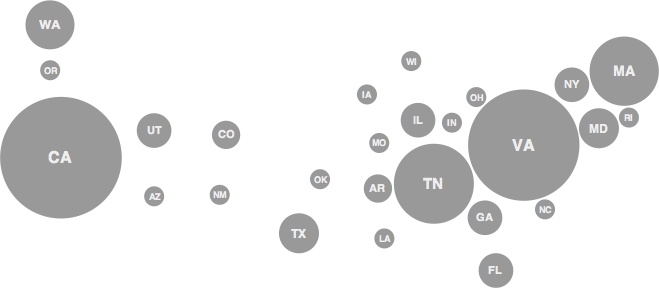Closing Remarks
This chapter covered some serious ground, introducing fundamental clustering techniques and applying them to your professional network data on LinkedIn in a variety of ways. As in the other chapters, we just touched the tip of the iceberg; there are many other interesting things that you can do with your LinkedIn data that were not introduced in this chapter. Take some time to explore the extended profile information that you have available. It could be interesting to try to correlate where people work versus where they went to school and/or analyze whether people tend to relocate into and out of certain areas, but keep in mind that your tool belt contains lots of other tools by now that donât necessarily have to include geo data or clustering. If you do continue to look at geo data, one of the many projects you might want to check out is an emerging open framework called geodict.

Figure 6-7. A Dorling Cartogram that uses the area of a circle to convey the number of colleagues that reside in each state; color could have been used to denote another variable, such as the unemployment rate associated with the state or your colleaguesâ job turnover rates, as determined by mining extended profile information
Get Mining the Social Web now with the O’Reilly learning platform.
O’Reilly members experience books, live events, courses curated by job role, and more from O’Reilly and nearly 200 top publishers.

